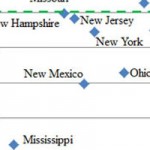Charter Schools, Education Savings Accounts, and Sensible School Choice
Even advocates for school choice have to admit that Rhode Island’s public school districts have a point when they complain about the financing of charter schools.
Charters are new public schools funded largely with taxpayer dollars, and not only do they take all of the state aid allocated for each student, but his or her home district has to send along a large chunk of local money. That money goes, as charter opponents put it, to build a duplicate education system.
If we take a step back from the politics of education and teacher unions, it’s difficult to see the sense of making this large investment. A report that the Rhode Island Department of Education published a couple of years ago estimated that it would cost almost $2 billion to bring all of the state’s public school buildings up to a “good condition.”
At the same time, the report’s authors calculated that those buildings currently have 19 percent excess capacity — meaning that they have a lot of empty space — and projected a continuing reduction in the number of students. From 2011 to 2021, the study projected a 4 percent drop in enrollment overall, reaching 13 percent in the suburbs.
In that light, does the state really need to increase its number of public schools?
Continue reading in the Providence Journal.


